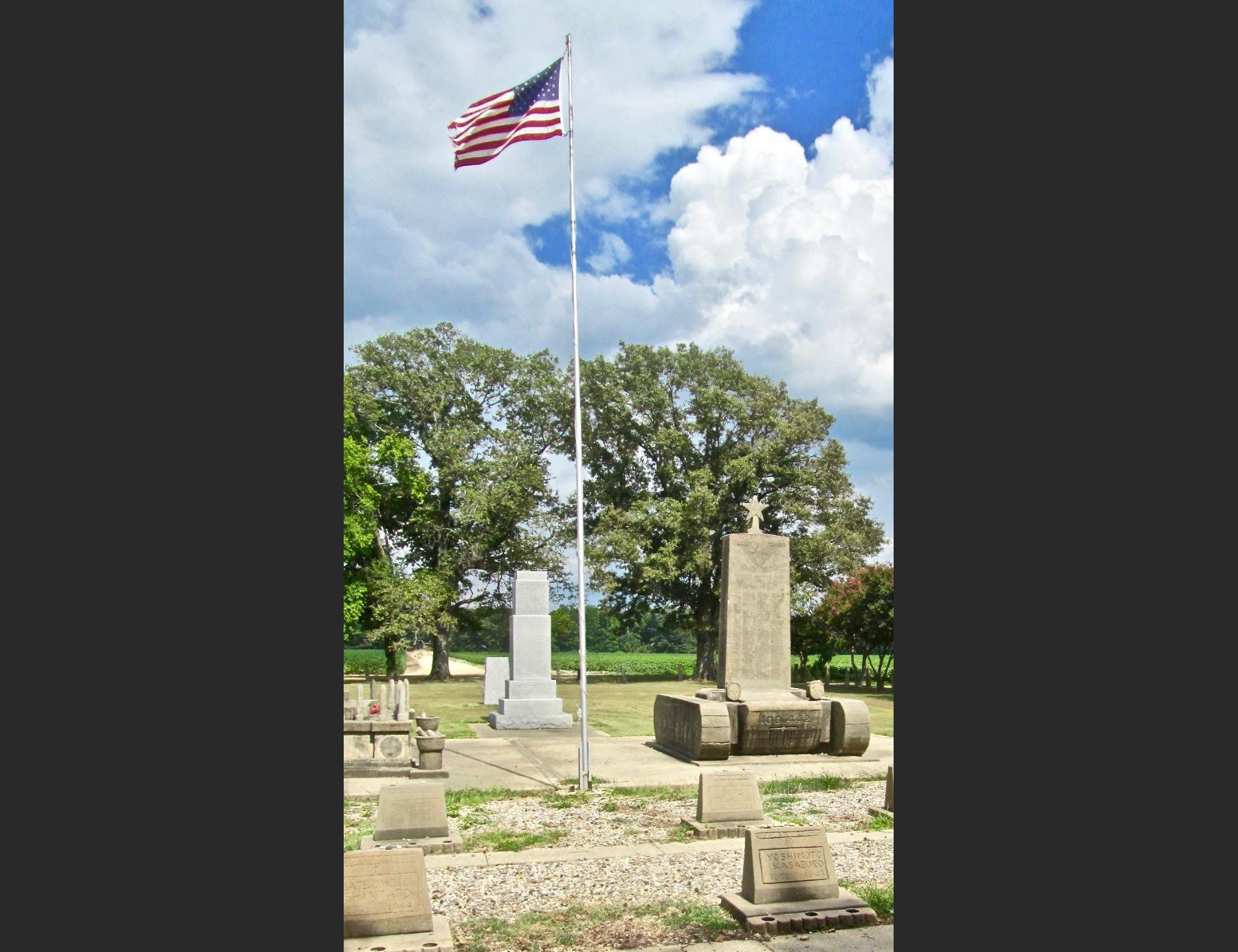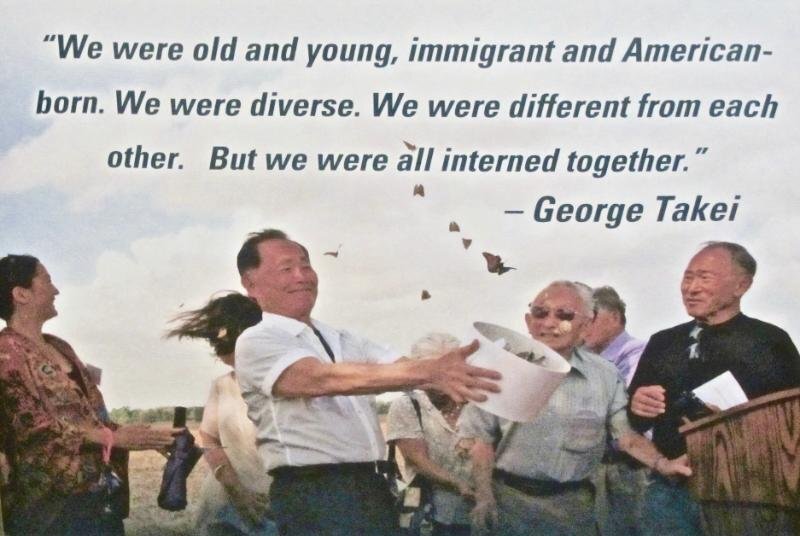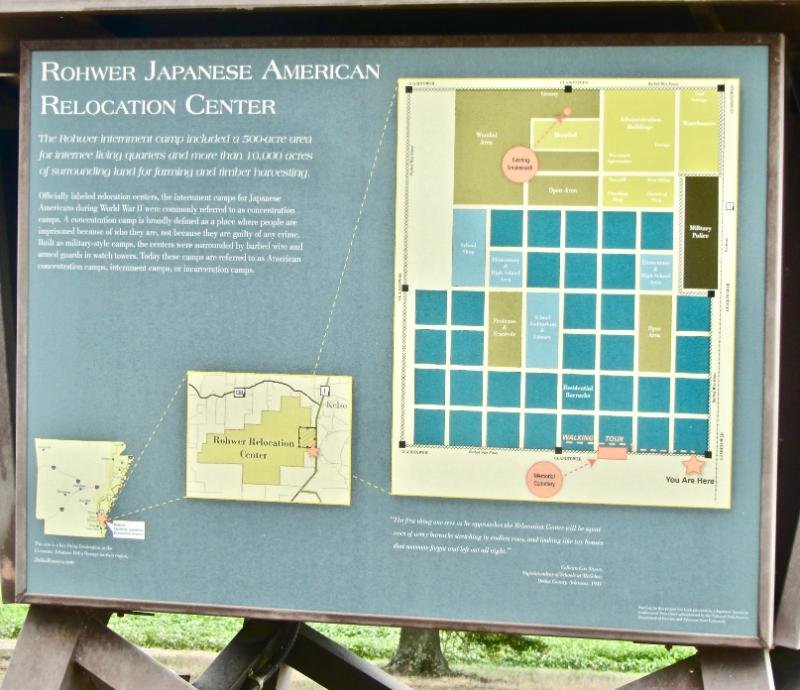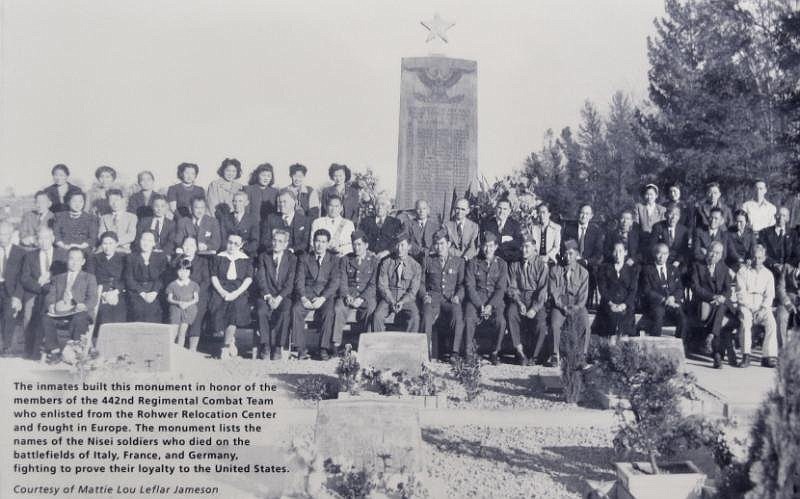ROHWER — When World War II combat ended 77 years ago this month, many of the 8,300 internees who'd been confined behind barbed wire three years earlier at Rohwer Japanese-American Relocation Center had already departed. Thirty-one of them are honored by name on monuments at this haunting Desha County site.
Those 31 men were among the 156 Rohwer captives who'd volunteered for the U.S. Army's 442nd Regimental Combat Team, a Japanese-American unit ranked as the most highly decorated in American military history.
All were enlisted men: privates, corporals, sergeants. They died in France and Italy, fighting Nazi and Fascist enemies on behalf of the nation that had forcibly exiled them from their West Coast homes to rural Arkansas.
In total, 121,000 people of Japanese ancestry had been shipped to 10 such camps west of the Mississippi River, including a second Arkansas location at Jerome. The mass transfer, authorized by President Franklin D. Roosevelt, is considered one of the most egregious U.S. government actions of the war.
 An American flag flies over monuments at Rohwer Relocation Center. (Special to the Democrat-Gazette/Marcia Schnedler) Most any day, visitors who stop at the Rohwer site are likely to have the memorial to themselves — a solitude that enhances the dolor of the setting. A copy of a guard tower at the entrance reinforces the fact that this was a place of involuntary confinement.
An American flag flies over monuments at Rohwer Relocation Center. (Special to the Democrat-Gazette/Marcia Schnedler) Most any day, visitors who stop at the Rohwer site are likely to have the memorial to themselves — a solitude that enhances the dolor of the setting. A copy of a guard tower at the entrance reinforces the fact that this was a place of involuntary confinement.
One information panel offers comments from Rohwer's best-known alumnus, George Takei, famed for his "Star Trek" role as USS Enterprise helmsman Mr. Sulu. He was sent to the camp at age 5 with his family.
Takei remembers reciting the Pledge of Allegiance each morning at school while looking out at the surrounding barbed wire. He describes his family's forcible shipment here from California as "the most defining moment of my life. We were imprisoned because of fears, misunderstanding and racial prejudice."
The 31 war dead among Rohwer's alumni are listed on a concrete memorial built in 1945 to resemble an Army tank. An inscription reads: "In memory of our sons who sacrificed their lives in the service of their country. They fought for freedom. They died that the world might have peace."
 George Takei (center) is the best known of Rohwer’s 8,300 internees. (Special to the Democrat-Gazette/Marcia Schnedler) The same 31 names are engraved on a nearby granite memorial dedicated in 1982. It was suggested by former resident Sam Yada, who was concerned that the original monuments were deteriorating. He wanted a material more durable than concrete to preserve the memory of the fallen Japanese-Americans.
George Takei (center) is the best known of Rohwer’s 8,300 internees. (Special to the Democrat-Gazette/Marcia Schnedler) The same 31 names are engraved on a nearby granite memorial dedicated in 1982. It was suggested by former resident Sam Yada, who was concerned that the original monuments were deteriorating. He wanted a material more durable than concrete to preserve the memory of the fallen Japanese-Americans.
Also at the site are 24 headstones marking the burials of civilians who died here. Another monument has a square base supporting an obelisk surmounted by a globe and eagle. Urns are placed at its four corners, while inscriptions in two languages adorn the sides. One in Japanese translates as: "May the people of Arkansas keep in beauty and reverence forever this ground where our bodies sleep."
Near Rohwer Relocation Center, whose buildings were removed or demolished after 1945, information panels along the Delta Heritage Trail bicycle path provide more details on the camp. At Jerome, on the border of Drew and Chicot counties, a lone memorial marks the location of that World War II site.
Fleshing out the history of the Rohwer and Jerome camps is the Japanese American Internment Museum, opened in 2013 in McGehee. A museum tour provides useful background before visitors drive the dozen miles northeast on Arkansas 1 to Rohwer.
 A map of the internment camp is posted at Rohwer Relocation Center. (Special to the Democrat-Gazette/Marcia Schnedler) One panel is headlined "Words Do Matter." Its text observes that "the language used to describe the treatment of Japanese Americans during World War II is often controversial.
A map of the internment camp is posted at Rohwer Relocation Center. (Special to the Democrat-Gazette/Marcia Schnedler) One panel is headlined "Words Do Matter." Its text observes that "the language used to describe the treatment of Japanese Americans during World War II is often controversial.
"Many Japanese Americans feel that 'concentration camp' is the most appropriate term for the places in which they were confined. Other Americans cannot fathom that the term 'concentration camp' can be associated with anything in America. Some Holocaust survivors object to the term being used for anything outside their experience.
"Many Americans are more comfortable with milder terms such as 'internment camps,' but these terms are historically and legally inaccurate. As historian Roger Daniels has suggested, euphemisms are part of injustice."
The Japanese American Internment Museum
- Address: 100 S. Railroad St., McGehee
- Hours: 9 a.m.-4 p.m. Thursday-Saturday.
- Admission: $5 for visitors 12 and older, free for youngsters.
- Information: Visit rohwer.astate.edu/plan-your-visit/museum/ or call (870) 222-9168.
- The museum’s website also has details on the unstaffed Rohwer Relocation Center, which is open every day.
